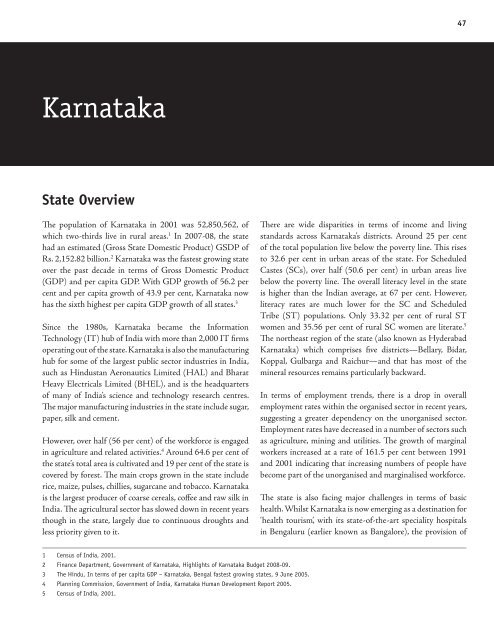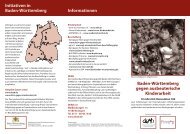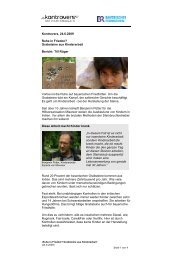Children - Terre des Hommes
Children - Terre des Hommes
Children - Terre des Hommes
Create successful ePaper yourself
Turn your PDF publications into a flip-book with our unique Google optimized e-Paper software.
47KarnatakaState OverviewThe population of Karnataka in 2001 was 52,850,562, ofwhich two-thirds live in rural areas. 1 In 2007-08, the statehad an estimated (Gross State Domestic Product) GSDP ofRs. 2,152.82 billion. 2 Karnataka was the fastest growing stateover the past decade in terms of Gross Domestic Product(GDP) and per capita GDP. With GDP growth of 56.2 percent and per capita growth of 43.9 per cent, Karnataka nowhas the sixth highest per capita GDP growth of all states. 3Since the 1980s, Karnataka became the InformationTechnology (IT) hub of India with more than 2,000 IT firmsoperating out of the state. Karnataka is also the manufacturinghub for some of the largest public sector industries in India,such as Hindustan Aeronautics Limited (HAL) and BharatHeavy Electricals Limited (BHEL), and is the headquartersof many of India’s science and technology research centres.The major manufacturing industries in the state include sugar,paper, silk and cement.However, over half (56 per cent) of the workforce is engagedin agriculture and related activities. 4 Around 64.6 per cent ofthe state’s total area is cultivated and 19 per cent of the state iscovered by forest. The main crops grown in the state includerice, maize, pulses, chillies, sugarcane and tobacco. Karnatakais the largest producer of coarse cereals, coffee and raw silk inIndia. The agricultural sector has slowed down in recent yearsthough in the state, largely due to continuous droughts andless priority given to it.There are wide disparities in terms of income and livingstandards across Karnataka’s districts. Around 25 per centof the total population live below the poverty line. This risesto 32.6 per cent in urban areas of the state. For ScheduledCastes (SCs), over half (50.6 per cent) in urban areas livebelow the poverty line. The overall literacy level in the stateis higher than the Indian average, at 67 per cent. However,literacy rates are much lower for the SC and ScheduledTribe (ST) populations. Only 33.32 per cent of rural STwomen and 35.56 per cent of rural SC women are literate. 5The northeast region of the state (also known as HyderabadKarnataka) which comprises five districts—Bellary, Bidar,Koppal, Gulbarga and Raichur—and that has most of themineral resources remains particularly backward.In terms of employment trends, there is a drop in overallemployment rates within the organised sector in recent years,suggesting a greater dependency on the unorganised sector.Employment rates have decreased in a number of sectors suchas agriculture, mining and utilities. The growth of marginalworkers increased at a rate of 161.5 per cent between 1991and 2001 indicating that increasing numbers of people havebecome part of the unorganised and marginalised workforce.The state is also facing major challenges in terms of basichealth. Whilst Karnataka is now emerging as a <strong>des</strong>tination for‘health tourism’, with its state-of-the-art speciality hospitalsin Bengaluru (earlier known as Bangalore), the provision of1 Census of India, 2001.2 Finance Department, Government of Karnataka, Highlights of Karnataka Budget 2008-09.3 The Hindu, In terms of per capita GDP – Karnataka, Bengal fastest growing states, 9 June 2005.4 Planning Commission, Government of India, Karnataka Human Development Report 2005.5 Census of India, 2001.






